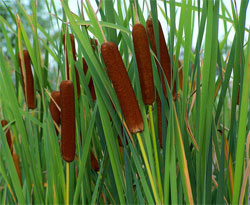http://www.tacticalintelligence.net/blog/the-fantastic-four-4-essential-wild-edible-plants-that-may-one-day-just-save-your-life.htm
Pine
 “You can eat pine?!” Yes, pine trees are an awesome food source that I’ve eaten throughout the year. “OK…so how do you eat it” Good question, let me explain.
“You can eat pine?!” Yes, pine trees are an awesome food source that I’ve eaten throughout the year. “OK…so how do you eat it” Good question, let me explain.
First of all, if you’ve ever eaten pesto, chances are you’ve eaten pine. ‘Pignoli’ or pine nuts are a common ingredient in pesto and are often served on ice-cream . Every species of pine produces seed (or nuts in this case) and all can be eaten. In the late fall and early winter, the cones can be gathered, opened, and the seeds extracted. The only issue is that most pine don’t produce large seeds like for example the pinion pine does.
In most other species the seeds are quite small and it takes quite a few to make a decent meal. However, if you’re lucky to live in the Great Basin or other arid areas where pinion pines love to grow you’re in luck, if not and if you don’t feel like spending so much time for a meager meal, read on…
In the spring, the male pollen anthers can be eaten and are high in protein. The inner bark of the pine can also be eaten and surprisingly makes quite a tasty meal if prepared right. And with some species – like the white pine – it can be surprisingly sweet.
In addition, pine needles can be gathered year round to make a great tea which contains a ton of Vitamin C (not in the least bit ‘piney’ tasting as you would expect).
Cattail
 This is my favorite wild edible. Not only is it referred to as the wilderness ‘supermarket’ (because of its many edible parts), but it has some great medicinal and utilitarian purposes as well.
This is my favorite wild edible. Not only is it referred to as the wilderness ‘supermarket’ (because of its many edible parts), but it has some great medicinal and utilitarian purposes as well.
Cattail provides something to eat year round. And the amount that you can gather is quite substantial. In fact, a study was conducted at the Cattail Research Center of Syracuse University’s Department of Plant Sciences by Leland Marsh. He reported that he could harvest 140 tons of rhizomes per acre near Wolcott, NY. That equates to more than 10 times the average yield per acre of potatoes!
In the early spring the young shoots and stalks can be eaten raw or cooked. The flower heads in late spring can be husked like corn and boiled — in fact it has an almost corn-like taste. Very yummy.  In summer, the brown-orangish pollen heads can be eaten raw or dried into flour. Fall is the best time to gather the horn-shaped corms (the sproutings of next years’ plants) which are eaten raw or roasted. And in winter, the root stalk is full of starch which can be broken up into water, dissolved, strained and dried into flour as good as wheat flour.
In summer, the brown-orangish pollen heads can be eaten raw or dried into flour. Fall is the best time to gather the horn-shaped corms (the sproutings of next years’ plants) which are eaten raw or roasted. And in winter, the root stalk is full of starch which can be broken up into water, dissolved, strained and dried into flour as good as wheat flour.
No comments:
Post a Comment